Spring planting methods of raspberry seedlings on the site
Planting raspberry seedlings can be carried out both in the spring and in the fall... But the experience of many gardeners confirms that planting in open ground in spring is preferable: during this period, survival rate is higher. Raspberries are a perennial, for high yields in subsequent years it is important to choose the right place on the site, apply the required amount of fertilizer to the soil and carry out preliminary preparation of the seedling for planting.
Spring planting dates
It is better to propagate raspberries by seedlings in the spring as early as possible - as soon as the snow melts and the earth warms up. Usually this period falls on the end of March or the beginning of April. Planting during this period is favorable for a number of reasons:
- raspberries are at rest, sap flow has not begun, and planting will be painless for the seedling;
- in spring, in cool weather, when there is no hot sun, the survival rate of plants is one hundred percent;
- the soil is still wet in spring after the snow melts, this also contributes to better rooting of raspberry seedlings.
With the likelihood of recurrent frosts, the planting of raspberries, in which the buds have not yet awakened, will not suffer. If the leaves begin to bloom, and the shoots begin to grow, then with an unfavorable weather forecast, it is better to cover the plantation with agrofibre.
You can propagate raspberries with seedlings in late April - early May. In this case, in the absence of rain and warm weather, much attention will have to be paid to watering. Until the seedlings take root, the soil should not be allowed to dry out.
Choosing a place on the site
Raspberries love sunny warm places. Light shading of plantings is allowed in the morning. She does not like drafts, so it is recommended to plant it along the fence or wall of the house, but not on the north side. The predecessors of raspberries can be cucumbers, zucchini or legumes, but it is undesirable to plant it after tomatoes or potatoes.
Soils are preferable sandy loam or loamy. You can plant raspberries on sandy soils, but every year you will have to add a large amount of organic matter to the soil and water it more often. Raspberry is moisture-loving, but does not tolerate stagnant water. Landing in areas where groundwater passes close, water collects after snow melts or stagnates for a long time after rain is unacceptable. After the snow melts, it is easy to decide on a suitable place - you should choose the driest and warmest.
Raspberry roots are creeping, grow rapidly. To limit their growth and prevent raspberries from spreading throughout the site, it is advisable to enclose the plantation. For this, sheets of iron or slate are vertically dug into the soil. The lower layer of the fence should go to a depth of 50 cm, and the upper one should rise above the surface by 10 cm.
Advice
It is often enough to fence off the planting from the south side, because most often the raspberry growth spreads towards the sun. In spring, when the soil is moist and soft, it is easy to dig in the fence.
Planting methods and site preparation
The preparation of the site depends on how the planting will be carried out - trench or cluster.
The trenching method involves planting seedlings in one or more rows. In this case, the distance between raspberries in one row is no more than 30 cm, and the distance between the rows is about 1 meter. This will provide easy access to the bushes for picking and grooming. The planting trench can be of any length. It is correct that the trench is located from north to south. With this placement, all the bushes will be evenly illuminated by the sun throughout the day.
Bush planting is the placement of four to six seedlings in one hole.It is enough to leave a distance of about 15 cm between them, you can plant them in a circle. After a few years, the bush will grow and will have a spreading crown of 12-15 shoots. There should be a distance of at least 1.5 meters between the bushes, and it is imperative to provide for easy access from all sides.
In order to plant raspberries without hassle in the spring, it is advisable to prepare the site in the fall.
- If the site is overgrown with grass, then all the sod is removed with a sharp shovel.
- The earth is dug onto the bayonet of a shovel, while the roots of perennial weeds are selected.
- Humus or compost is introduced and embedded in the soil. If there is not enough organic matter, then it can be introduced into the hole in the spring during planting.
In this form, the site is left for the winter, and all other work will be carried out in the spring.
Raspberries can be grown using the container method. A 10 liter container is required for each seedling. That's right, if the depth of the container is 40 cm, and the width and length are about 50 cm. A drainage 10 cm thick is laid at the bottom, the rest of the volume should be occupied by nutrient soil. This method is convenient because the bushes can be placed in any suitable place, and for the winter they can be removed to a cold basement. In regions with a harsh climate, this method can grow bushes of remontant raspberrieswhich do not always endure frosty winters.
Preparing seedlings for planting
The seedling must have a well-developed root system with healthy roots. Immediately it is necessary to reject those that have few roots, they are rotten or dry. The shoot is shortened during transplantation, leaving 30 cm. The remainder should have from one to three buds. Saplings with a stem of medium thickness take root better. Too thin ones can dry out, and on thick shoots buds may not awaken.
During transport, the root system should be wrapped in a damp cotton cloth, and for a short time it can be placed in a plastic bag. You cannot keep in the bag for a long time - the roots may begin to rot. If the seedling was dug up a long time ago, then before planting its roots must be dipped in a bucket of water for 5-6 hours. After that, they are placed in a container with a solution of any root growth stimulator for the time indicated on the package. You can save the roots from drying out and improve the survival rate if you dip them in a clay chatterbox. The clay is diluted with a small amount of water to the consistency of kefir and a little mullein is added.
In the spring, when the snow melts completely, and the soil warms up and dries up a little, you can start planting.
With the ordinary planting method, they dig a trench, and when growing with a bush, a hole. The depth of the pit should not be more than 35 cm. Its bottom is lightly tamped and spilled with water. On clay soils, a drainage layer is poured from pieces of brick, gravel, stones or expanded clay.
A fertile mixture is prepared. Based on one bush, mix:
- 1 glass of wood ash;
- 1/3 bucket of rotted manure or ½ bucket of compost;
- 2 tablespoons of superphosphate.
In addition, nitrogen fertilizers do not need to be applied, otherwise the bush will grow foliage, and the shoot will stop growing.
When planting a seedling, it is important to correctly position the root collar - flush with the soil surface. When it is deepened, new shoots cannot form, and with a high planting, the seedling can dry out.
Raspberries are a moisture-loving plant, therefore, after planting, it is necessary not only to water the seedlings abundantly, but also to mulch them. This will reduce evaporation of water, and the need for frequent watering and weeding will disappear. Not only straw, sawdust, or compost can be used as mulch, but also black plastic wrap. It is laid on the plantation, and in those places where the seedlings protrude, cross-shaped cuts are made. Polyethylene mulch reduces weed growth. Black agrofibre is suitable for the same purposes.
For raspberry bushes, a garter to the support is required. When growing in a row, for these purposes, you can use a trellis or ordinary wire, which is pulled between two posts.They must be strong, at least 1.5 meters high. Support posts are installed at the ends of the rows. If the rows are long, then several additional pillars are dug in the row with a distance of 3 meters between them. The wire is fastened in two rows - the first at a level of 60 cm from the ground, the second - 1 m 20 cm. The shoots are tied to the wire with twine or fastened with clamps.
In the bush growing method, several columns are set around the circumference, and the wire is pulled in the same way.
Outcome
Raspberries planted in spring usually take one hundred percent. By adhering to all the recommendations when planting, you can get a good harvest next year. We must not forget that raspberries are a perennial shrub, and the choice of a place for cultivation must be approached responsibly so that later you do not have to transplant it.

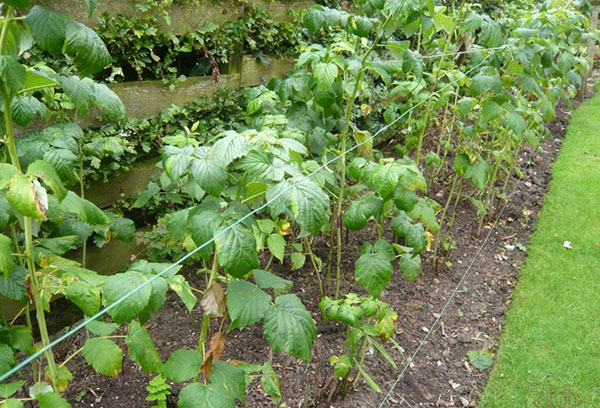
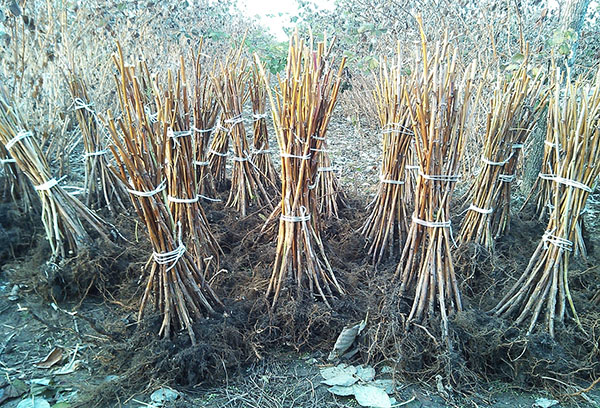
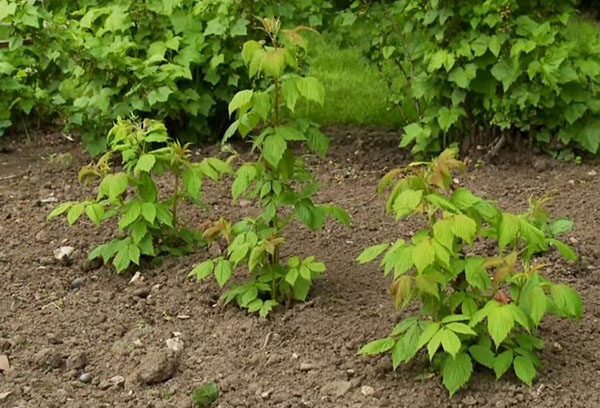
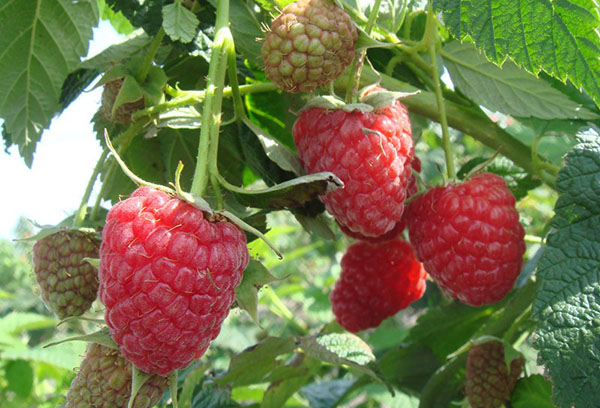

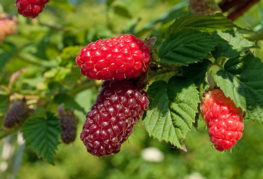
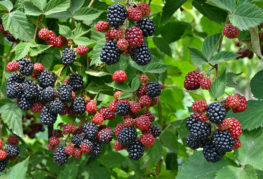

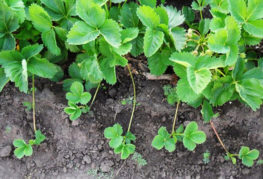
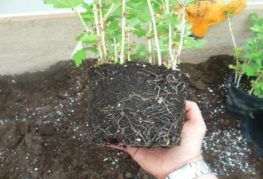
and will be published shortly.